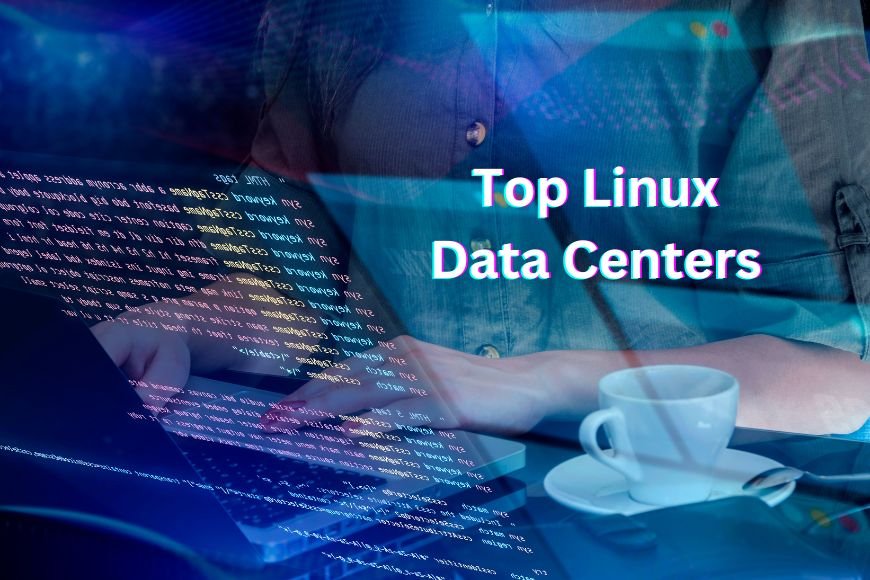Top Linux Data Centers for 2024
Get ready to dive into the ultimate Linux lineup for 2024 data centers! Discover the top picks with Tectoks: Ubuntu, CentOS Stream, Debian, Fedora Server, and SUSE Linux Enterprise Server!

Table of Content:
Introduction
1. Ubuntu: The Versatile Workhorse
2. CentOS Stream: The Transitioning Titan
3. Debian: The Reliable Veteran
4. Fedora Server: The Innovator
5. SUSE Linux Enterprise Server: The Enterprise Champion
Conclusion
Introduction:
In the dynamic world of data center operations, selecting the right operating system is paramount, dictating the stability and adaptability of the entire infrastructure. Linux distributions have emerged as the linchpin of modern data centers, offering a rich tapestry of features tailored to enterprise needs. This guide explores the top Linux distributions for data centers in 2024, ranging from the widely-used Ubuntu, prized for its user-friendliness, to the evolving CentOS Stream, a bridge between innovation and stability. It delves into Debian's renowned stability and extensive software repositories, as well as Fedora Server's embrace of cutting-edge technologies. Additionally, we examine SUSE Linux Enterprise Server (SLES), esteemed for its reliability and high availability. With each distribution suited to specific use cases, from web servers to SAP environments, this guide serves as a roadmap for navigating the diverse landscape of Linux distributions, guiding data center professionals towards informed decisions in the ever-evolving digital ecosystem.
1. Ubuntu: The Versatile Workhorse
Overview
Ubuntu, developed by Canonical Ltd., has gained widespread adoption due to its user-friendly interface, robust ecosystem, and active community support. Whether you’re managing a small-scale server or a large data center, Ubuntu offers a balance of stability, flexibility, and innovation.
Key Features
1. Stability and LTS Releases
-
Long-Term Support (LTS) versions are a cornerstone of Ubuntu’s appeal. These releases receive security updates for five years, providing stability for critical workloads.
-
Ubuntu LTS ensures predictable behavior, making it suitable for production environments.
2. Containerization and Orchestration
-
Ubuntu excels in container management. It supports both Docker and Kubernetes, allowing seamless deployment and scaling of containerized applications.
-
LXD, Ubuntu’s lightweight container hypervisor, simplifies container management at scale.
3. Cloud Integration
-
Ubuntu integrates seamlessly with public clouds (such as AWS, Azure, and Google Cloud) and private clouds (like OpenStack).
-
Juju, Ubuntu’s service modeling tool, facilitates cloud orchestration and deployment.
4. Security and AppArmor
-
Regular security updates keep Ubuntu systems protected.
-
AppArmor, a mandatory access control framework, enhances security by confining application behavior.
5. Snap Packages
-
Ubuntu’s Snap package format allows easy distribution of applications with all dependencies bundled.
-
Snaps ensure consistent behavior across different environments.
6. Landscape Management
-
Landscape, Canonical’s management tool, simplifies server provisioning, monitoring, and patch management.
-
It’s particularly useful for large-scale deployments.
Use Cases
-
Web Servers: Ubuntu powers many web servers, including those running Nginx, Apache, and Node.js.
-
Database Servers: MySQL, PostgreSQL, and MongoDB run efficiently on Ubuntu.
-
DevOps and CI/CD Pipelines: Ubuntu’s compatibility with popular DevOps tools makes it a go-to choice for continuous integration and deployment.
2. CentOS Stream: The Transitioning Titan
Overview
CentOS Stream serves as a continuous delivery distro that tracks just ahead of RHEL development. It bridges the gap between cutting-edge features and stability, making it an intriguing choice for data centers.
Key Features
1. Predictable Updates
-
CentOS Stream offers rolling updates, allowing data centers to stay current without compromising stability.
-
Unlike traditional CentOS Linux, which lagged behind RHEL releases, CentOS Stream provides a more dynamic experience.
2. Developer-Friendly Environment
-
Developers who need the latest tools and libraries find CentOS Stream appealing.
-
It allows participation in the development of future RHEL versions.
3. Red Hat Connection
-
As a downstream project of Red Hat, CentOS Stream aligns closely with RHEL.
-
It serves as a migration path for current CentOS Linux users who need to transition between 2021 and 2024.
4. Infrastructure Improvements
-
Recent enhancements include NFS koji share clean-up and an overhaul of the CentOS Stream release process.
-
These improvements contribute to a more efficient and reliable platform.
Use Cases
-
Testing and Development: CentOS Stream is an excellent choice for testing new features and ensuring compatibility with upcoming RHEL releases.
-
Continuous Integration (CI): Developers can use it for CI pipelines, benefiting from the latest software.
3. Debian: The Reliable Veteran
Overview
Debian is a free and open-source operating system developed and maintained by a global community of volunteers. Thousands of dedicated contributors worldwide collaborate on Debian, with the shared goal of creating an operating system composed entirely of free software.
Key Features:
1. Stability and Long-Term Support (LTS)
-
Rock-Solid Stability: Debian is known for its unwavering stability. The stable release provides a dependable foundation for critical workloads.
-
Long-Term Support: Each stable release receives 3 years of full support, followed by an additional 2 years of extended LTS support. This commitment ensures longevity and security for your infrastructure.
2. Extensive Software Repositories
-
Debian boasts vast software repositories containing thousands of packages. Whether you need web servers, databases, or development tools, Debian has you covered.
-
The Debian package management system ensures easy installation, updates, and removal of software.
3. Universal Operating System
-
Debian’s versatility extends across various platforms:
-
Servers: It excels as a server OS, handling web services, databases, and more.
-
Desktops: Debian provides a stable and customizable environment for desktop users.
-
Embedded Systems: Its lightweight variants are ideal for embedded devices.
4. Security and Patch Frequency
-
Security Updates: Debian prioritizes security. Regular updates keep your system protected against vulnerabilities.
-
Community Vigilance: The Debian community actively monitors security issues and promptly addresses them.
5. Community-Driven Project
-
Debian is a true community effort. Volunteers worldwide contribute to its development, testing, and maintenance.
-
The Debian Social Contract emphasizes principles like free software, openness, and collaboration.
Use Cases
-
Web Servers: Deploy Apache, Nginx, or other web servers on Debian.
-
Database Servers: MySQL, PostgreSQL, and MongoDB run seamlessly.
-
Development Environments: Developers appreciate Debian’s stability and extensive toolset.
4. Fedora Server: The Innovator
Overview
Fedora Server provides a stable, flexible, and universally adaptable basis for the everyday provision of digital services and information. It caters to a wide range of organizations and individuals. Based on the latest technology, Fedora Server brings the most modern environment to users as early as possible.
Key Features:
1. Embracing the Bleeding Edge
-
Latest Software: Fedora is a playground for cutting-edge technologies. If you’re eager to experiment with new features, Fedora won’t disappoint.
-
Fast Release Cycle: Frequent releases ensure that you’re always on the forefront of software advancements.
2. Modularity and Fine-Grained Control
-
Modularity: Fedora’s modular design allows you to choose specific components. Whether it’s web servers, databases, or development tools, you have fine-grained control.
-
Customizable Stack: Mix and match software versions to tailor your stack to specific requirements.
3. Cockpit Management Interface
-
Cockpit: Fedora includes the Cockpit web-based interface, making server administration straightforward.
-
Graphical Management: Manage services, storage, users, and networking through an intuitive web interface.
4. Developer-Friendly Environment
-
Developer Tools: Fedora provides a rich ecosystem for developers. From compilers to libraries, everything is readily available.
-
Container Support: Fedora integrates well with container technologies like Podman and Buildah.
5. Community-Driven Collaboration
-
Fedora’s community actively contributes to its development. It’s a place where ideas flourish and collaboration thrives.
-
Fedora Workstation and Fedora Atomic Host are other variants catering to different use cases.
Use Cases
-
DevOps and CI/CD Pipelines: Fedora’s agility suits continuous integration and deployment workflows.
-
Innovation Labs: If you’re researching emerging technologies, Fedora provides a fertile ground.
5. SUSE Linux Enterprise Server: The Enterprise Champion
Overview
SUSE Linux Enterprise Server (SLES) is a secure, adaptable, and easy-to-manage Linux server platform. It empowers developers and administrators to deploy business-critical workloads across various environments: on-premises, in the cloud, and at the edge.
Key Features:
1. High Availability and Clustering
-
Rock-Solid Reliability: SLES shines in scenarios where high availability is non-negotiable. It ensures services remain accessible even during hardware failures or maintenance.
-
Pacemaker and Corosync: These tools facilitate cluster management and failover, making SLES a top choice for critical applications.
2. System Rollback with Btrfs Snapshots
-
Btrfs Filesystem: SLES leverages Btrfs, which allows system snapshots. If an update goes awry, you can easily roll back to a previous state.
-
Efficient Recovery: Btrfs snapshots minimize downtime and simplify system recovery.
3. SAP-Certified and Enterprise Applications
-
SAP Integration: SLES is SAP-certified, making it the go-to platform for running SAP applications. It’s optimized for SAP HANA workloads.
-
Oracle Database Support: SLES provides robust support for Oracle databases.
4. Subscription Model and Support
-
Long-Term Support: SLES offers 10 years of support for each major version. This predictability is crucial for enterprise planning.
-
Priority Support: SUSE’s support services ensure timely assistance for critical issues.
Use Cases
-
Large Enterprises: SLES caters to organizations with complex infrastructures, where reliability and scalability are paramount.
-
Database Clusters: Deploy SLES for high-performance database clusters.
-
SAP Environments: If your business relies on SAP solutions, SLES is a natural fit.
Conclusion
Alright, folks, there you have it! We've taken a deep dive into the exciting world of Linux distributions for data centers in 2024. From the familiar faces like Ubuntu to the innovative offerings of Fedora Server, each distribution brings its own flavor to the table.
As we wrap up this journey, it's clear that the landscape of data center operating systems is as vibrant and diverse as ever. Whether you're seeking stability, bleeding-edge features, or enterprise-grade reliability, there's a Linux distribution out there to suit your needs.So, whether you're a seasoned sysadmin or just dipping your toes into the world of data center management, remember to weigh your options carefully. Consider your specific use cases, future scalability needs, and of course, the preferences of your team.
With the right Linux distribution powering your data center, you'll be well-equipped to tackle whatever challenges come your way in this fast-paced digital age. Happy server wrangling, and may your uptime be ever high!
What's Your Reaction?










































































